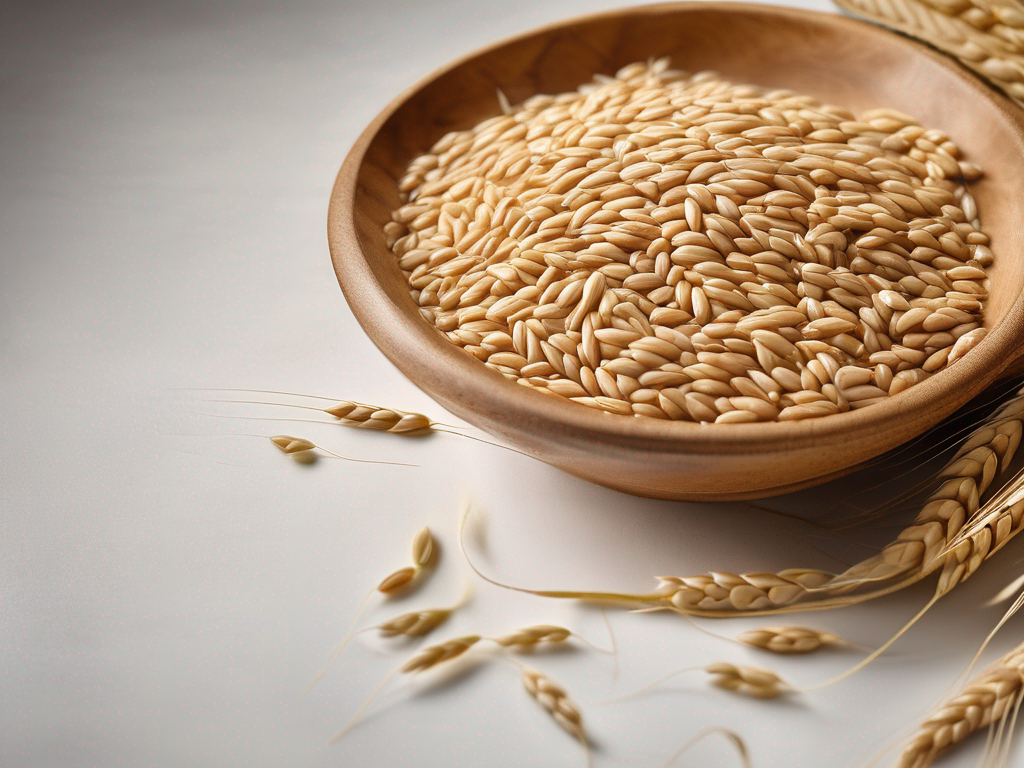
Maximizing the Shelf Life of Common Wheat: Effective Storage Methods
Get Your Free Food Safety Cheat Sheet
30 most common foods with instant answers. Print it and stick it on your fridge—completely free!
Maximizing the Shelf Life of Common Wheat: Effective Storage Methods
Common wheat is a versatile and nutritious staple food that is consumed worldwide in various forms such as bread, pasta, and cereals. To make the most of this essential grain and ensure its freshness and quality, proper storage is crucial. In this blog post, we will explore effective methods for storing common wheat to extend its shelf life and maintain its nutritional value. (Common wheat)
Understanding the Importance of Proper Storage for Common Wheat
Proper storage of common wheat is essential to prevent spoilage, maintain its nutritional content, and extend its shelf life. When stored correctly, common wheat can last for an extended period without losing its quality. Factors such as moisture, temperature, light exposure, and pests can all impact the storage of common wheat. By following the right storage techniques, you can ensure that your common wheat remains fresh and safe for consumption.
Factors Affecting the Shelf Life of Common Wheat
Several factors can influence the shelf life of common wheat, including:
- Moisture: Excess moisture can lead to mold growth and spoilage.
- Temperature: High temperatures can cause the wheat to go rancid, while low temperatures can affect its texture and flavor.
- Light Exposure: Exposure to light can lead to oxidation and nutrient loss.
- Pests: Insect infestations can damage the wheat and contaminate it.
Effective Methods for Storing Common Wheat
To maximize the shelf life of common wheat and maintain its quality, consider the following storage methods:
1. Choose the Right Container
- Use airtight containers such as glass jars, plastic containers, or metal bins to prevent moisture and pest infiltration.
- Ensure that the containers are clean, dry, and free from any odors that can be absorbed by the wheat.
2. Store in a Cool, Dark Place
- Keep the common wheat in a cool, dark place away from direct sunlight and heat sources.
- Optimal storage temperature for common wheat is between 50-70°F (10-21°C).
3. Control Moisture Levels
- Store common wheat in a dry environment to prevent mold growth and spoilage.
- Consider using desiccants such as silica gel packets to absorb excess moisture.
4. Rotate Stock Regularly
- Practice the "first in, first out" method to ensure that older stock is used first.
- Regularly check the wheat for signs of spoilage or pest infestation.
5. Avoid Mixing with Strongly Scented Items
- Keep common wheat away from strongly scented items such as spices or cleaning products to prevent flavor absorption.
Safety Tips for Storing Common Wheat
When storing common wheat, it is essential to follow these safety tips to ensure food safety and prevent contamination:
- Wash hands thoroughly before handling wheat.
- Inspect the wheat for any signs of pests, mold, or unusual odors before storing.
- Label containers with the date of storage to track freshness.
- Avoid storing wheat near chemicals or cleaning products.
- Regularly clean and inspect storage containers for any signs of damage or contamination.
Conclusion
Proper storage is key to maintaining the freshness and quality of common wheat for an extended period. By following the effective storage methods outlined in this blog post and adhering to safety guidelines, you can ensure that your common wheat remains safe for consumption and retains its nutritional value. Remember to choose the right container, control moisture levels, store in a cool, dark place, rotate stock regularly, and follow safety precautions to maximize the shelf life of common wheat. With these tips in mind, you can enjoy the benefits of this versatile grain for a longer period. (Common wheat)
Authoritative Food Safety References
These agencies and university labs inform every tip and health precaution we publish.
USDA FoodKeeper – Cold Storage Guidelines
Official refrigerator, freezer, and pantry timelines maintained by the U.S. Department of Agriculture.
Visit USDA FoodKeeperFDA Produce Safety Rule & Grower Guidance
Field-to-fridge handling practices that prevent contamination of fruits, vegetables, and leafy greens.
Visit FDA Produce SafetyCDC Foodborne Illness Prevention Hub
Surveillance-backed guidance on pathogens, symptoms, and steps to reduce foodborne illness risk.
Visit CDC Food SafetyUC Davis Postharvest Technology Center
University research detailing optimal storage atmospheres for produce after harvest.
Visit UC Davis PostharvestPenn State Extension – Home Food Preservation & Safety
Peer-reviewed extension bulletins on safe canning, chilling, and reheating practices.
Visit Penn State ExtensionGet Your Free Food Safety Cheat Sheet
30 most common foods with instant answers. Print it and stick it on your fridge—completely free! Want more? Upgrade to the complete guide with 70+ foods.
Scan your food directly and get instant safety info using our AI-powered camera feature.